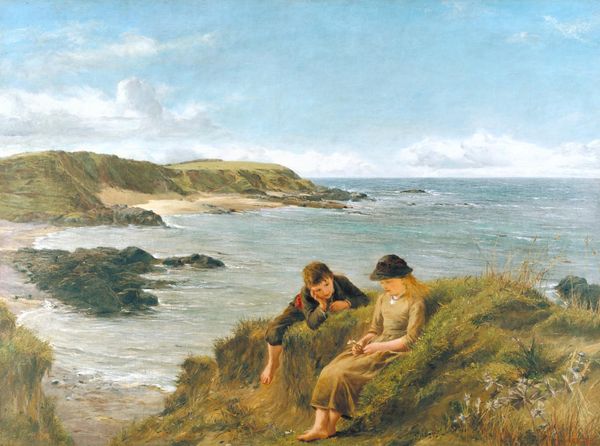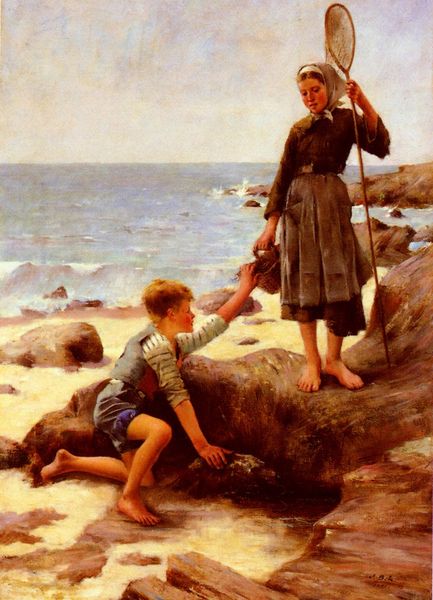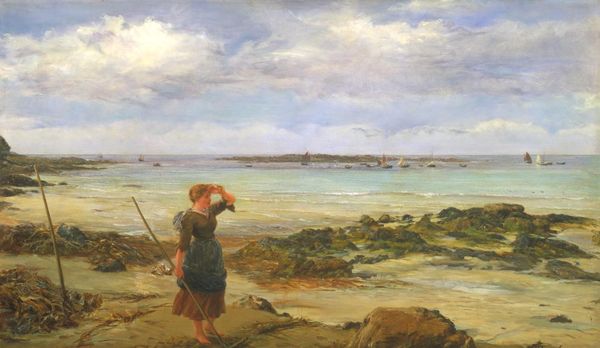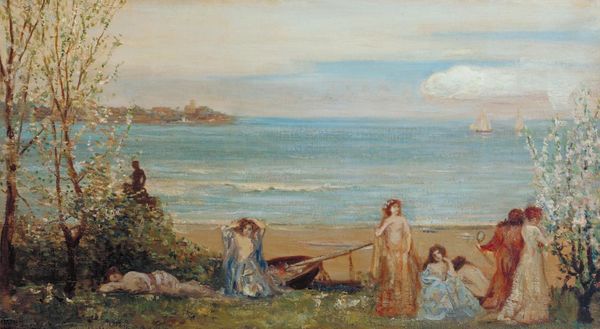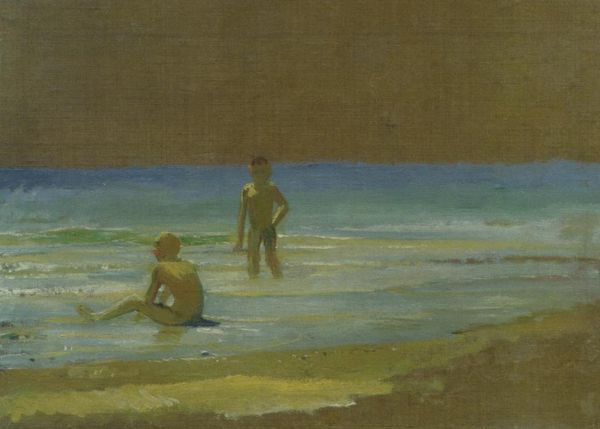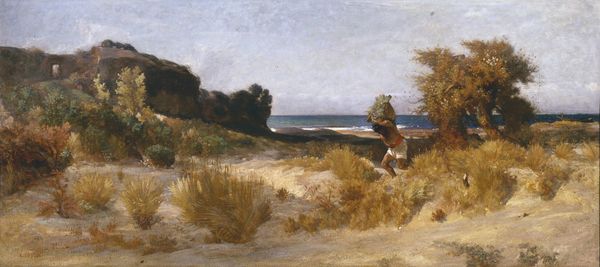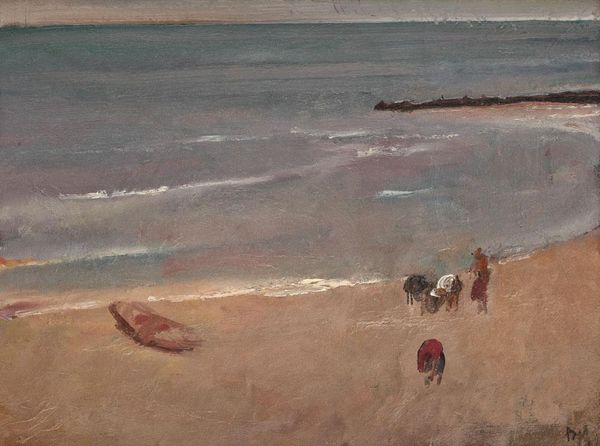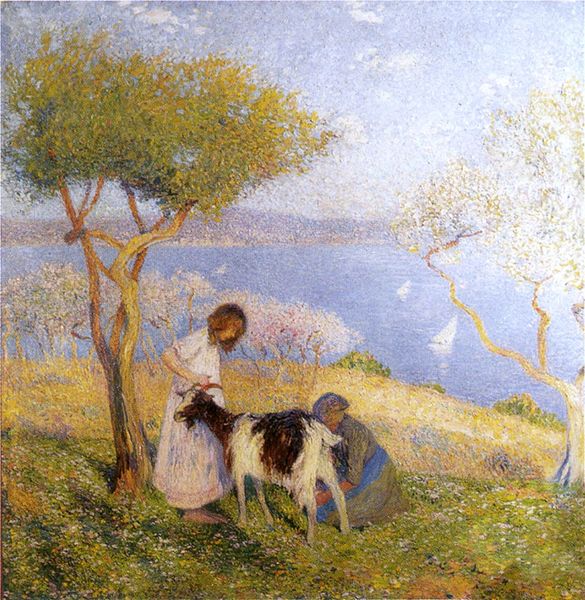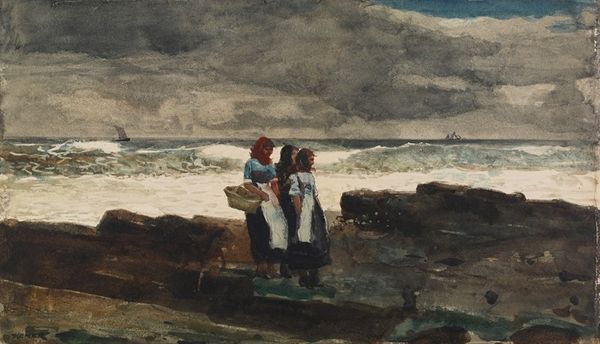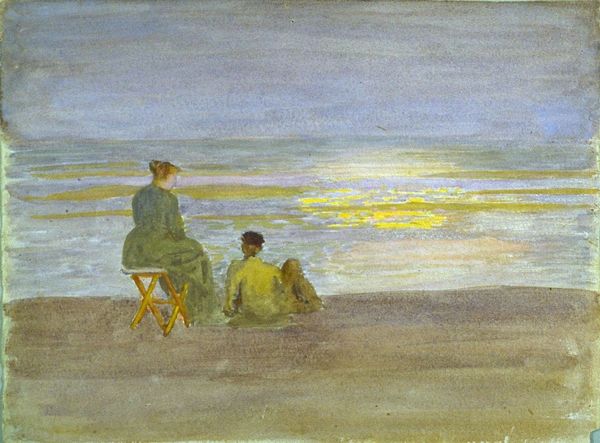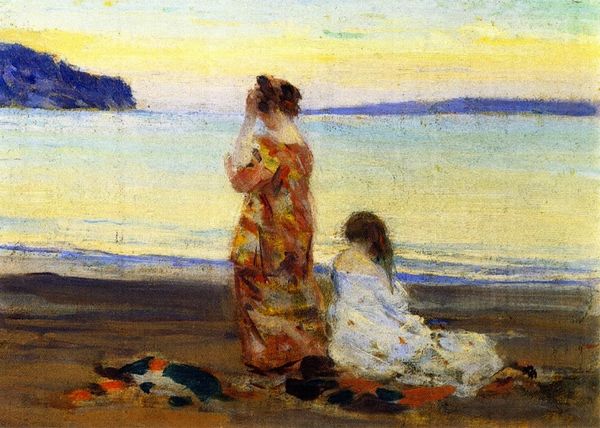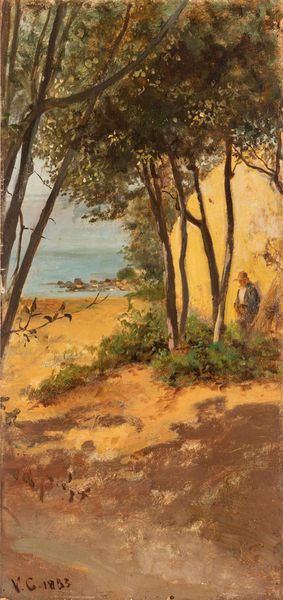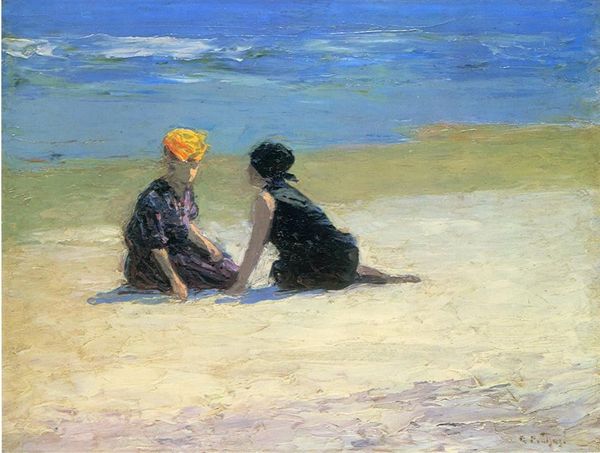
painting, plein-air, oil-paint
#
portrait
#
painting
#
impressionism
#
plein-air
#
oil-paint
#
landscape
#
impressionist landscape
#
figuration
#
oil painting
#
ocean
#
romanticism
#
seascape
#
genre-painting
#
sea
Copyright: Public domain
Editor: So, this oil painting is called "Girls on the Beach" by Joan Brull. The loose brushwork and soft color palette give it such an intimate and nostalgic feel. It almost looks like a faded memory. How do you read this work, considering its time and place? Curator: Considering the likely period and location, we might see this as a commentary on the emerging visibility of women and children in public spaces. Coastal scenes became popular subjects, reflecting changing social norms around leisure and the burgeoning tourism industry. How might the artist’s decision to depict children, specifically, contribute to this dialogue? Editor: I guess it's showing this idea of innocence and freedom that wasn't always allowed, especially for young girls, maybe? Curator: Exactly! The "innocence" of children was a powerful trope. But it is key to think of the institutions through which paintings like this circulate; it could subtly reinforce certain ideas about childhood, gender roles, and even class. Who gets to be "innocent" and carefree? Does the way these figures are posed or presented challenge or reinforce existing power structures? Editor: So, it's not just a sweet picture, but potentially also a subtle participant in larger conversations about social mobility and class identity. Is it right to say that these are upper-class or middle-class girls and families and how they could afford these types of pastimes, going to the beach and having portraits done of them, but these were out of reach for lower income classes? Curator: That is indeed a significant lens through which we can view this piece. Think, too, about how paintings like this, when exhibited or collected, helped to construct and solidify those social categories. The act of displaying this image becomes a social act in itself. Editor: That's such a different way of seeing it! I usually just focused on the aesthetics, but understanding its social role adds so much more depth. Curator: Indeed. Recognizing how institutions and cultural context shape both the creation and reception of art allows us to see it not just as an object of beauty but as an active participant in social life.
Comments
No comments
Be the first to comment and join the conversation on the ultimate creative platform.
